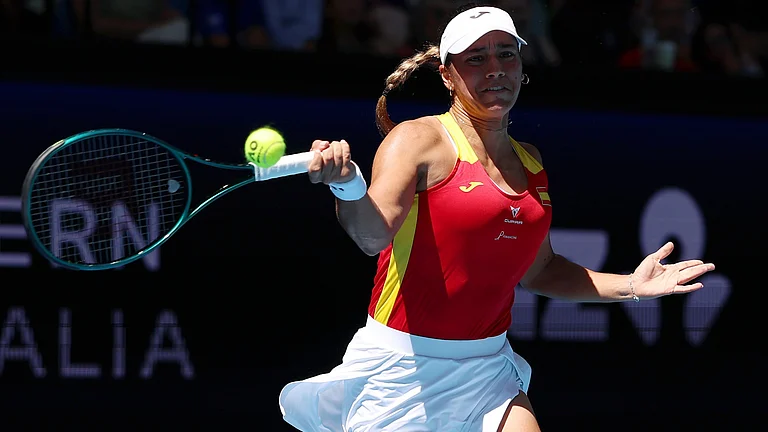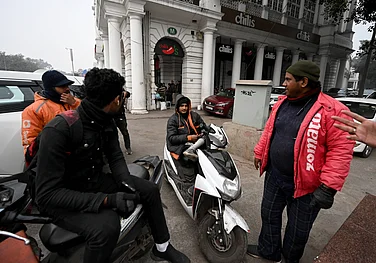Faced with a universal outcry against tampering with the basic features of the Constitution, the BJP has beaten a hasty retreat. The terms of reference it has spelt out for the soon-to-be-set-up Constitution review panel specify that the review will be carried out within the framework of parliamentary democracy. This means that the BJP will not try to impose a presidential form of government on India. But what was the danger that this posed which had got the people so worked up? And is it anyones contention that the Constitution should not be altered at all?
The BJP claims it raised the possibility of changing from the parliamentary to a presidential form of government as an antidote to the endemic instability that had given the country three governments in three years and brought policy and decision-making at the Centre to a near-halt.
But if one were to go by the spate of articles that flooded the newspapers, it had a very different agenda. This was to impose a monolithic Hindu regime on the country under the guise of a Constitution review. The BJP, its opponents argued, had reached the end of its natural growth. In 1999, it won only two seats more than it had in 1998, and almost half of the ruling coalitions seats in the Lok Sabha were won by its alliance partners. The BJP was being forced to come to terms with the fact that it would probably never come to power on its own, and was therefore chafing at the constraints that working within a coalition were imposing upon it. The presidential system looked like a way out of the impasse-a way of imposing its agenda upon the people without having to win an outright majority of the seats in Parliament.
This saffron threat was a red herring if there had ever been one. The danger that inheres in a shift to the presidential system is not one of dictatorship but of paralysis followed by the countrys disintegration. To understand why, one has only to examine the experience of the US, where terms of the president and the two houses of Congress are fixed and independent of each other. What this has yielded is not a strong but a weak presidency. This makes it perfectly possible for one or both houses of Congress to be controlled by the opposition. The result is what Americans call "gridlock".
Even when Congress and the White House are controlled by the presidents party, the president is unable to impose any discipline on his own party. The American public was reminded of this very rudely when for just two years during the first half of the first Clinton presidency, the Democrats controlled both houses of Congress. Despite that, Clinton couldnt push through both his $16-billion "swords into ploughshares" industrial reconstruction programme and his health bill because sections of his own party opposed him.
As a result, the US presidency has historically been a weak one in the field of domestic legislation. It has taken a Civil War, or a Great Depression to imbue it with sufficient powers to push through sweeping change in its social or economic laws. From Theodore Roosevelt till the Vietnam war, US presidents had compensated for their domestic weakness by being overbearing towards their neighbours or taking up highly proactive foreign policies. But after President Kennedy committed the US to a war that took 60,000 American lives without Congress sanction, the latter took most of the presidents autonomy in defence and foreign policy away too. So, as Sebastian Mallaby reminds us in the latest issue of Foreign Affairs, the US president has virtually turned into a non-executive president.
America could prosper despite a nearly paralysed executive because its a country of immigrants bound together by a common desire to make a new start and by access to the boundless natural resources of a whole continent. India is, by contrast, an old, exhausted and overpopulated country with no fewer than 200 ethnic groupings. India needs a strong central government capable of taking difficult decisions simply to keep ahead of penury. Yet at the same time it must be an exceptionally flexible and accommodating central government to maintain the delicate Centre-state balance.
By a miracle, the Constitution-makers gave India just what it needed. Its federal constitution was turned by the 1956 linguistic reorganisation of states into the worlds first federation of ethnic states. At the same time, the cabinet system of government and the simple majority voting system combined to give the executive both stability and real decision-making power at the Centre and in the state legislatures. The former enforces unity on a party or coalition by making the price of disunity the loss of power. The latter strengthens the executive by giving it a larger share of seats than votes. Any change in these three basic features-federalism, cabinet government and the simple majority voting system-will upset the delicate balance of forces between Centre and states and between ethnic and national loyalties that keeps India together.
This danger has passed, but that doesnt mean the Constitution cant be improved at the margins. The most urgently needed reform is to free the political system from the tyranny of money. This requires the establishment of a state fund for financing parties and polls. A closely related reform is to bring back some degree of synchrony between the central and state elections so that each year does not see elections somewhere in the country. This is essential if each election is not to turn into a referendum on the central government. Only then will the latter regain some of its capacity to take decisions that yield fruit over a longer time period. A third urgently needed reform is to restore to the Rajya Sabha the capacity to judge complex issues free from immediate political pressures and thus provide an essential check and balance to the Lok Sabha. The proposed constitutional review panel will therefore have its hands full.























